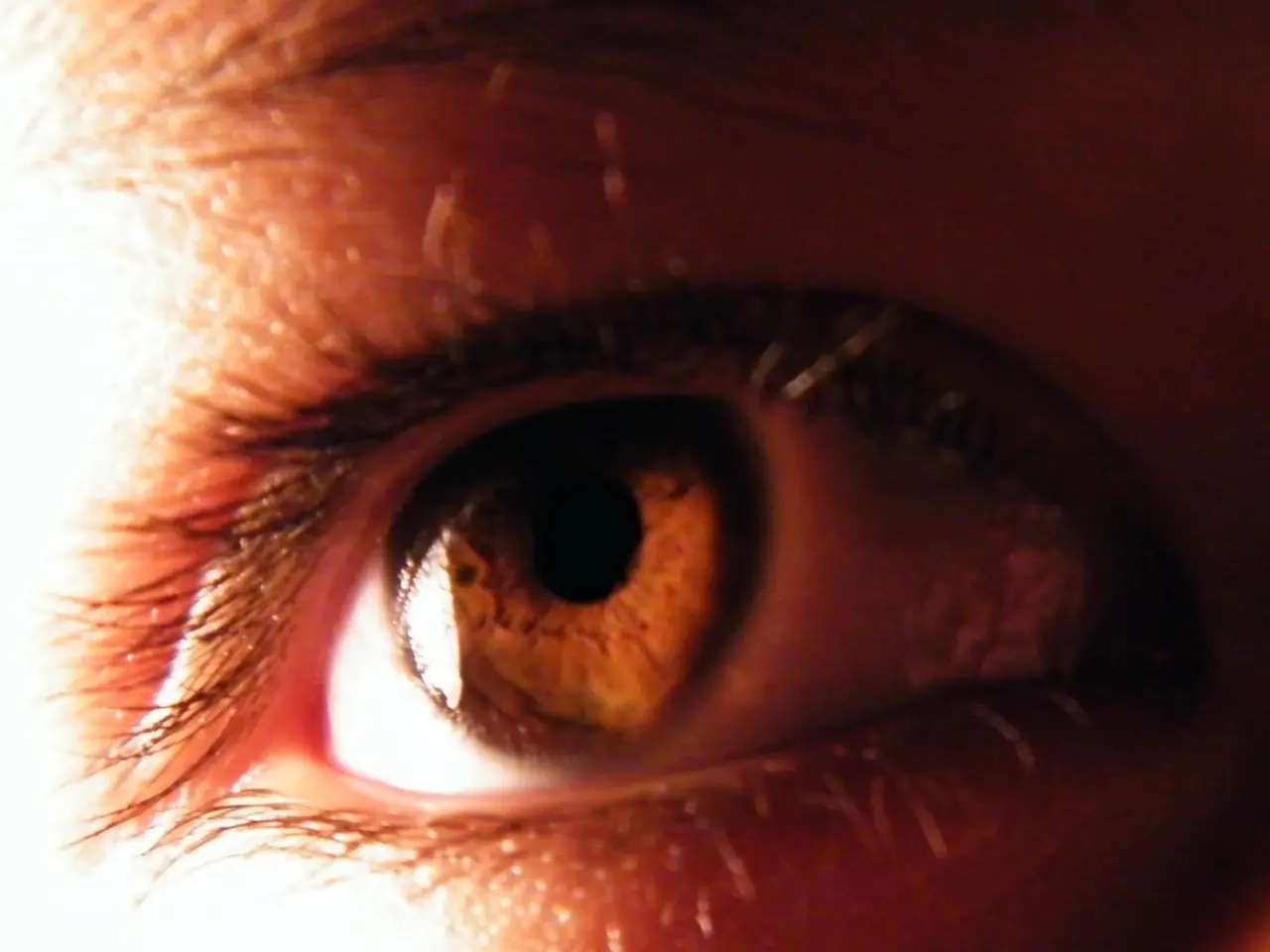Tired Eyes Leading to Dryness: Understanding the Roots, Stopping the Problem, and Remedies
Long Screen Time and Poor Sleep Contribute to Dry Eye and Eyestrain
Long hours spent in front of screens and insufficient sleep can lead to dry eye and eyestrain. Sleep deprivation reduces tear quality and quantity, causing dryness and discomfort, while prolonged screen use can reduce blinking rates and increase exposure to blue light, leading to eye muscle fatigue.
Causes
Reduced tear production and quality due to sleep deprivation, prolonged screen exposure, poor ergonomics, glare, uncorrected vision, environmental factors like low humidity, and medical conditions such as meibomian gland dysfunction are contributing factors to dry eye.
Symptoms
Dryness, irritation, burning, and a gritty sensation in eyes, eye strain symptoms including aching sore eyes, headaches around eyes or temples, blurry or double vision, and increased light sensitivity, puffiness, and dark circles around eyes related to poor sleep are common symptoms of dry eye.
Prevention Tips
Adopting the 20-20-20 rule (every 20 minutes, look at something 20 feet away for 20 seconds), maintaining proper workspace ergonomics, using blue light filters or screen protectors, blinking more often, limiting evening screen use, keeping ambient air humidified, and ensuring good sleep hygiene are effective prevention strategies.
Treatment Options
Using artificial tears or lubricating eye drops, correcting underlying vision problems with proper glasses or contact lenses, addressing meibomian gland dysfunction or other medical issues, and ensuring good sleep hygiene are treatment options for dry eye.
When to Contact a Doctor
Persistent or worsening dry eye symptoms despite artificial tears or screen adjustments, blurry vision lasting more than 60 minutes after screen use stops, one-sided eye pain, sudden vision loss, flashing lights, or floaters, severe headache with nausea or extreme light sensitivity, and symptoms that worsen with daily prolonged screen sessions indicate the need for medical attention.
In summary, long screen time and poor sleep degrade eye lubrication and cause muscular fatigue, resulting in dry eyes and eyestrain. Preventive strategies focus on reducing screen exposure, improving blinking and ergonomics, and ensuring sufficient sleep. Medical attention is warranted if symptoms persist, worsen, or accompany more concerning vision changes.
- Dry eye symptoms can include a stinging or burning sensation in the eye, red, irritated eyes, blurred vision, a feeling of something gritty or scratchy in the eye, mucus in or around the eye, pain when wearing contact lenses, and excess watering or tears in the eye due to irritation.
- Moisturizing gels and ointments are also available for treating dry eye symptoms.
- Over-the-counter (OTC) eye drops can treat mild dry eye symptoms.
- Tear duct plugs may be recommended by doctors to block tear duct drainage and prevent tears from draining from the eyes in cases of dry eye caused by a tear duct problem.
- Symptoms of tired eyes can include blurred vision, watery eyes, headaches, and facial muscle fatigue from squinting.
- Considering using specialized computer glasses may help if people have difficulty seeing the screen.
- Placing a humidifier in the room may add moisture to the air and help prevent dry eye.
- In rare cases, surgery may be necessary to treat the underlying cause of dry eye.
- If dry eye does not improve with home treatments, a doctor may prescribe eye drop medications such as cyclosporine or Lifitegrast.
- Avoiding smoke, wind, and air conditioning, which can be drying to the eyes, may help prevent dry eye.
- The American Academy of Sleep Medicine recommends adults get at least 7 hours of sleep each night to help prevent tired, dry eyes.
- Wearing sunglasses to protect the eyes from the direct sun may help prevent dry eye.
- If driving, altering air vents so hot or cold air is not blowing directly into the face may help prevent dry eye.
- Reduced blinking rates and exposure to blue light from prolonged screen use can lead to symtpoms of eye muscle fatigue.
- Maintaining proper workspace ergonomics, using blue light filters, blinking more often, and limiting evening screen use are effective strategies to prevent dry eye.
- Tear duct plugs may be recommended by doctors to treat dry eye caused by a tear duct problem.
- Burning, stinging, and a gritty sensation in the eyes, as well as redness, irritation, and mucus around the eyes, are common symptoms of dry eye.
- Over-the-counter (OTC) eye drops can treat mild dry eye symptoms, while moisturizing gels and ointments are also available for more severe cases.
- In some cases, surgery may be necessary to treat the underlying cause of dry eye, but in most cases, home treatments and prescription medications like cyclosporine or Lifitegrast are effective.
- Adopting good sleep hygiene and aiming for at least 7 hours of sleep each night, as recommended by the American Academy of Sleep Medicine, can help prevent tired, dry eyes.




